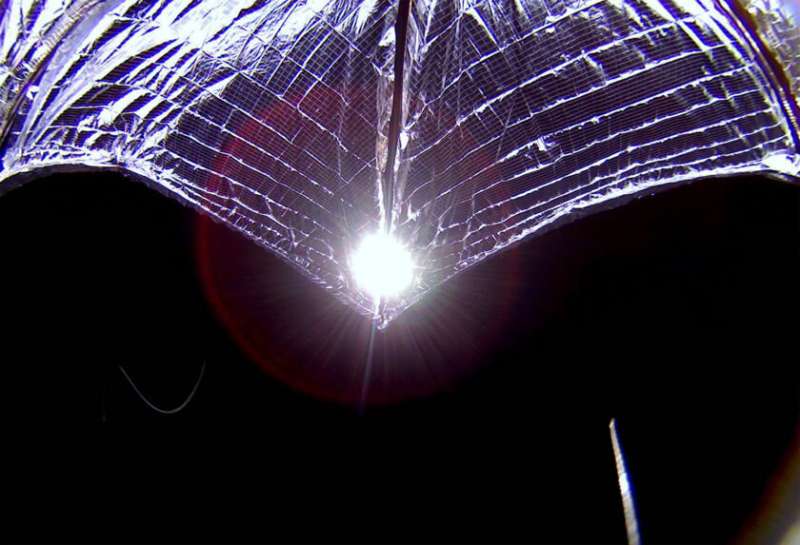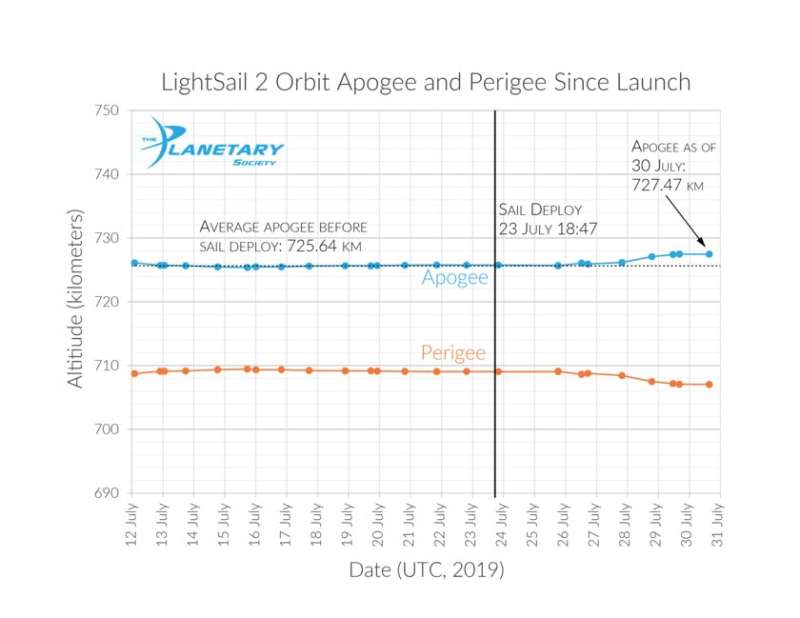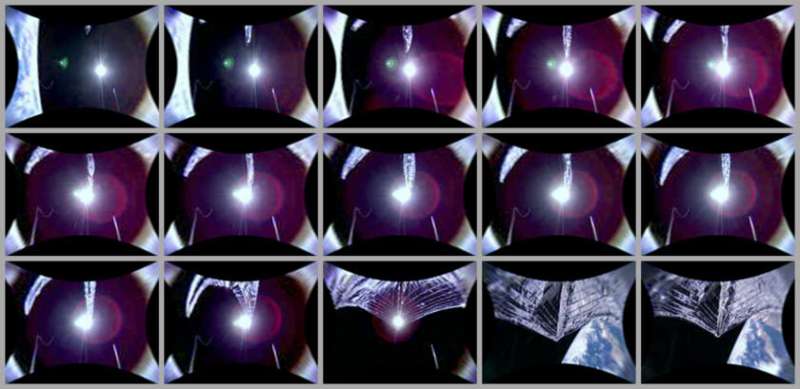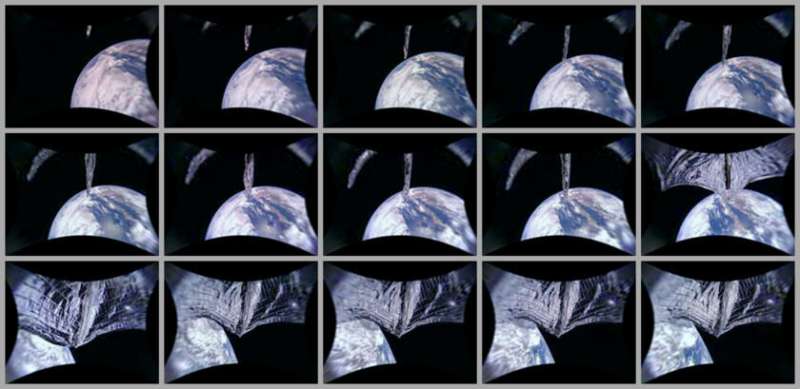Credit: The Planetary Society
Years of computer simulations. Countless ground tests. They've all led up to now. The Planetary Society's crowdfunded LightSail 2 spacecraft is successfully raising its orbit solely on the power of sunlight.
Since unfurling the spacecraft's silver solar sail last week, mission managers have been optimizing the way the spacecraft orients itself during solar sailing. After a few tweaks, LightSail 2 began raising its orbit around the Earth. In the past 4 days, the spacecraft has raised its orbital high point, or apogee, by about 2 kilometers. The perigee, or low point of its orbit, has dropped by a similar amount, which is consistent with pre-flight expectations for the effects of atmospheric drag on the spacecraft. The mission team has confirmed the apogee increase can only be attributed to solar sailing, meaning LightSail 2 has successfully completed its primary goal of demonstrating flight by light for CubeSats.
"We're thrilled to announce mission success for LightSail 2," said LightSail program manager and Planetary Society chief scientist Bruce Betts. "Our criteria was to demonstrate controlled solar sailing in a CubeSat by changing the spacecraft's orbit using only the light pressure of the Sun, something that's never been done before. I'm enormously proud of this team. It's been a long road and we did it."
Credit: The Planetary Society / Data provided by NXTRAC
The milestone makes LightSail 2 the first spacecraft to use solar sailing for propulsion in Earth orbit, the first small spacecraft to demonstrate solar sailing, and just the second-ever solar sail spacecraft to successfully fly, following Japan's IKAROS, which launched in 2010. LightSail 2 is also the first crowdfunded spacecraft to successfully demonstrate a new form of propulsion.
"For The Planetary Society, this moment has been decades in the making," said Planetary Society CEO Bill Nye. "Carl Sagan talked about solar sailing when I was in his class in 1977. But the idea goes back at least to 1607, when Johannes Kepler noticed that comet tails must be created by energy from the Sun. The LightSail 2 mission is a game-changer for spaceflight and advancing space exploration."
On Monday, LightSail 2 sent home a new full-resolution image captured by its camera during solar sail deployment. The perspective is opposite to last week's full-resolution image and shows the sail more fully deployed. LightSail 2's aluminized Mylar sail shines against the blackness of space, with the Sun peeking through near a sail boom.
Credit: The Planetary Society
The mission team will continue raising LightSail 2's orbit for roughly a month, until the perigee decreases to the point where atmospheric drag overcomes the thrust from solar sailing. During the orbit-raising period, the team will continue optimizing the performance of the solar sail.
"We've been working since sail deployment to refine the way the spacecraft tracks the Sun," said LightSail 2 project manager Dave Spencer. "The team has done a great job getting us to the point where we can declare mission success. Moving ahead, we're going to continue working to tune the sail control performance and see how much we can raise apogee over time."
One such refinement involves LightSail 2's single momentum wheel, which rotates the spacecraft broadside and then edge-on to the Sun each orbit to turn the thrust from solar sailing on and off. Momentum wheels can "saturate," hitting predefined speed limits, after which they are no longer effective at rotating the spacecraft. Most spacecraft use chemical thrusters to desaturate momentum wheels; LightSail 2 relies on electromagnetic torque rods, which orient the spacecraft by pushing against Earth's magnetic field.
LightSail 2's momentum wheel currently reaches its saturation limit a couple of times per day, and desaturating the wheel temporarily takes the spacecraft out of its proper orientation for solar sailing. The mission team already applied a software update that increased the time between saturation events, and is also working to automate the desaturation process. Both refinements should result in improved solar sailing performance.
Credit: The Planetary Society
Provided by The Planetary Society


























